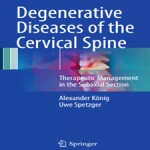Cellular and Molecular Approaches to Regeneration and Repair
ABSTRACT
The existence of an ischemic stroke “penumbra” was frst hypothesized by Astrup et al. in 1977 by demonstrating that there was a continuum of “threshold of ischemia” measured by electrical failure (potassium gradient) and reduced cerebral blood flow in the baboon cortical grey matter . The gradient indicated an ischemic core, which is now known to be a mass of dead, unrecoverable tissue at the center of the ischemic infarct. The core is surrounded by oligemic tissue, defned as “Oligemia” tissue with reduced blood flow, but function is unaltered, and ischemic tissue with reduced blood flow. The penumbral tissue, is “at risk” of death tissue with altered potassium release, altered electrical failure and dysfunctional. In 1983, Olsen and colleagues demonstrated that an ischemic penumbra also existed in stroke patients; there was differential distribution of blood flow in non-ischemic, ischemic and hyperemic tissues . The Ischemic Penumbra and Time is Penumbra have been reviewed in some detail by Heiss and Donnan , and two main publications in association with receiving the Johann Jacob Wepfer Award . On this occasion, the 40th anniversary of describing the penumbra, we will take a brief look back at the origin of the stroke penumbra, and forward to review current clinically relevant targets that may arrest penumbral recruitment, and the consequences of such detrimental recruitment. We will also briefly discuss the potential need for multiple forms of therapeutic interventions to maximally promote both short and long term recovery in patients.
INTRODUCTION
First, we will describe a novel technique to study the penumbral threshold in the rabbit embolic stroke model before addressing drug targets to attempt to arrest penumbra. In Fig. 1.1 we provide a topographical map of the rabbit cerebral cortex following an embolic stroke, comparing unstained fresh brain tissue (Fig. 1.1a) to a Nicotinamide Adenosine dinucleotide (NADH) map (Fig. 1.1c) of the brain followed by standard Triphenyl tetrazolium chloride (TTC) staining (Fig. 1.1b) to demarcate core (umbra) vs. viable tissue.
چکیده
وجود یک سکته مغزی ایسکمیک “penumbra” بر اساس فرض Astrup و همکاران. در سال 1977 نشان داد که یک دوره “آستانه ایسکمی” که توسط شکست الکتریکی (گرادیان پتاسیم) اندازه گیری شده است و فشار خون مغزی در ماده خاکستری قهوه ای باقیمانده کاهش یافته است. شیب نشان دهنده یک هسته ایسکمیک است که در حال حاضر شناخته شده به عنوان یک توده از بافت مرده و غیر قابل انعطاف در مرکز انفارکتوس حاد است. هسته با بافت الجیمری احاطه شده است و بافت بافتی که با کاهش جریان خون شناخته می شود، بافتی ندارد، اما عملکرد آن بدون تغییر است و بافت های ایسکمیک با کاهش جریان خون. بافت جنینی، در معرض خطر بافت های بافت با تغییر پتاسیم، نارسایی الکتریکی و اختلال عملکرد است. در سال 1983، اولسن و همکارانش نشان دادند که سکته مغزی نیز در بیماران سکته مغزی وجود دارد؛ توزیع دیفرانسیل جریان خون در بافتهای غیر ایسکمیک، ایسکمیک و هیپرلیمی وجود داشت. پوسیدگی عضلانی و زمان Penumbra به وضوح توسط هاس و دونان و دو نشریه اصلی در ارتباط با دریافت جایزه یوهان یعقوب وپفر بررسی شده است. در این مراسم، 40 سالگرد توصیف نیمه، نگاه کوتاهی به منشا نیمه سکته مغزی، و پیش از بررسی اهداف مرتبط با بالینی فعلی که ممکن است استخدام مرده را دستگیر کند، و پیامدهای چنین استخدام مضر را مرور کنیم. ما همچنین در مورد نیاز بالقوه برای چندین نوع مداخلات درمانی بحث خواهیم کرد تا حداکثر بهبودی کوتاه مدت و طولانی مدت در بیماران را ارتقا بخشیم.
مقدمه
اولا، یک تکنیک جدید برای مطالعه آستانه مرده در مدل سکته مغزی خرگوش قبل از پرداختن به اهداف دارویی به منظور دست زدن به قطب نما را توصیف می کنیم. در شکل 1.1 ما یک نقشه توپوگرافی قشر مغزی خرگوش به دنبال یک سکته مغزی مداومی را ارائه می دهیم، با مقایسه بافت مغز تازه مغز (شکل 1.1a) به نقشه نیکوتین آمید آدنوزین دینکلوتید (NADH) (شکل 1.1c) مغز و به دنبال آن رنگ آمیزی تریترنیل تترازولیم کلرید (TTC) استاندارد (شکل 1.1b) برای جداسازی هسته (umbra) در مقابل بافت زنده است.
Year: 2016
Publisher: SPRINGER
By : Paul A. Lapchak, John H. Zhang
File Information: English Language/ 532 Page / size: 8.25 MB
سال : 1395
ناشر : SPRINGER
کاری از : پل A. Lapchak، جان H. ژانگ
اطلاعات فایل : زبان انگلیسی / 532 صفحه / حجم : MB 8.25


![Cellular.and.Molecular.Approaches.to.[taliem.ir]](https://taliem.ir/wp-content/uploads/Cellular.and_.Molecular.Approaches.to_.taliem.ir_.jpg)
![Clinical Approaches to[taliem.ir] Clinical Approaches to[taliem.ir]](https://taliem.ir/wp-content/uploads/Clinical-Approaches-totaliem.ir_.jpg)
![Neurological.Regeneration.(Stem.Cells.in.Clinical.Applications).[taliem.ir] Neurological.Regeneration.(Stem.Cells.in.Clinical.Applications).[taliem.ir]](https://taliem.ir/wp-content/uploads/Neurological.Regeneration.Stem_.Cells_.in_.Clinical.Applications.taliem.ir_.jpg)

![Blood.Brain.Barrier.and.Inflammation.[taliem.ir]](https://taliem.ir/wp-content/uploads/Blood.Brain_.Barrier.and_.Inflammation.taliem.ir_-2-150x150.jpg)

دیدگاه خود را ثبت کنید
تمایل دارید در گفتگو شرکت کنید؟نظری بدهید!